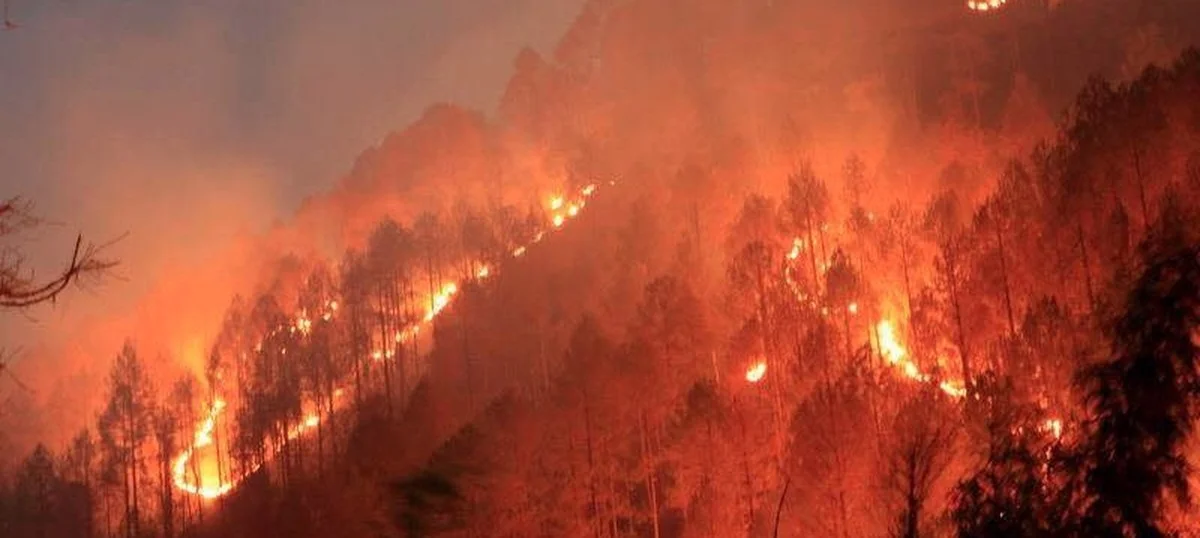Why is Uttarakhand’s Forest up in flames? Analysis
The surge in forest fires plaguing Uttarakhand is the result of a complex interplay between natural phenomena and human activities. According to the latest findings from the Forest Survey of India (FSI), Uttarakhand boasts a vast forest cover spanning 24,305 square kilometers, representing about 44.5 percent of its total geographical area.
These forests are primarily populated by highly flammable Chir Pine trees, covering an extensive 3.94 lakh hectares, rendering them susceptible to fires. Moreover, prolonged dry spells across the Himalayas, compounded by factors like excessive biomass, have significantly escalated the risk of wildfires.
A notable contributor to the rampant wildfires is the heightened aridity prevailing in the region, exacerbated by the ongoing heatwave gripping areas such as Nainital and Champawat, which share borders with Nepal. This increased aridity stands as a crucial driver behind the escalating forest fires ravaging Uttarakhand’s landscape.
Furthermore, the absence of substantial rainfall during the winter months has exacerbated the situation. Uttarakhand has experienced deficient winter rainfall and meager snowfall since September, further exacerbating the already precarious conditions, and contributing to the heightened risk of wildfires.
Frequency of these Forest Fires in India?
India typically witnesses its forest fire season from November to June. According to data from the Forest Survey of India (FSI) website, approximately 36 percent of the country’s forests are vulnerable to fires. Various factors including temperature, precipitation, vegetation types, and moisture levels influence the occurrence of these fires. Environmental experts highlight that factors such as fuel load, oxygen levels, and temperature fluctuations significantly contribute to the ignition of these fires.
Most incidents of fires in the country are reported during the months of March, April, and May. This surge is attributed to the abundance of dry biomass following the end of winter and preceding the onset of summer, as reported by the Indian Express.


